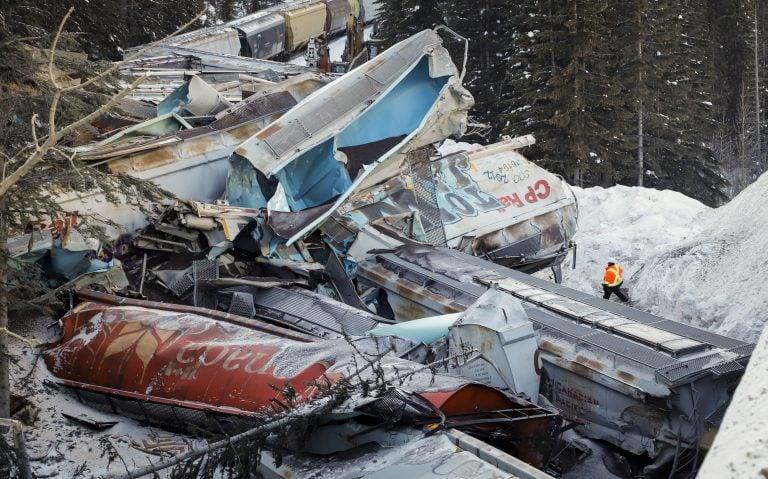The manic force of a train that went off the rails in B.C.
Image of the week: The scene of the CP derailment near Field that killed three crew members was a reminder how calamitously wrong rail transport can go

The scene of a derailment near Field, B.C. that killed three crew members. The Canadian Pacific freight train reportedly fell more than 60 metres from a bridge near the Alberta-B.C. boundary (Jeff McIntosh/CP)
Share
When Dylan Paradis, Andrew Dockrell and Daniel Waldenberger-Bulmer stepped onto the Canadian Pacific freight train in the dark and early hours of Feb. 4, everything seemed normal. The emergency brake was on. The world was quiet. The train had been parked on the border between British Columbia and Alberta for two hours. It was a steep grade, sure—Kicking Horse Pass is one of the steepest rail slopes in North America—but there was no reason to think the train might start moving on its own, let alone run downhill wildly out of control, plunging the lead locomotive 60 metres off a bridge into the Kicking Horse River while 99 of the 112 cars, packed with grain, thundered off their tracks. But that’s exactly what happened. All three crew members died, and the Transportation Safety Board is now searching for a cause. Their investigation will surely look back to Jan. 3, when 16 cars of another CP freight train derailed in the same area. No one was killed that time, but others in recent years have not been so lucky. According to the Teamsters railway union, an average of two railway employees died at work every year between 2007 to 2017; eight have died since November 2017 alone. Ottawa seems aware of the problem: in August 2018, the government announced nearly $21 million in new funding for railway safety, including new projects for infrastructure, research and technology. It was welcome news, but if you ask the union and other critics, the industry’s systemic oversight problems are too big for $21 million to solve.
MORE ABOUT IMAGES OF THE WEEK:
- Roger Stone, a man of many bad names
- A Saudi teenager is welcomed to Canada (and its politics)
- No one leans in like Bianca Andreescu, Canada’s new tennis phenom
- Kyrsten Sinema shows she’s one adversary Mike Pence can’t stare down